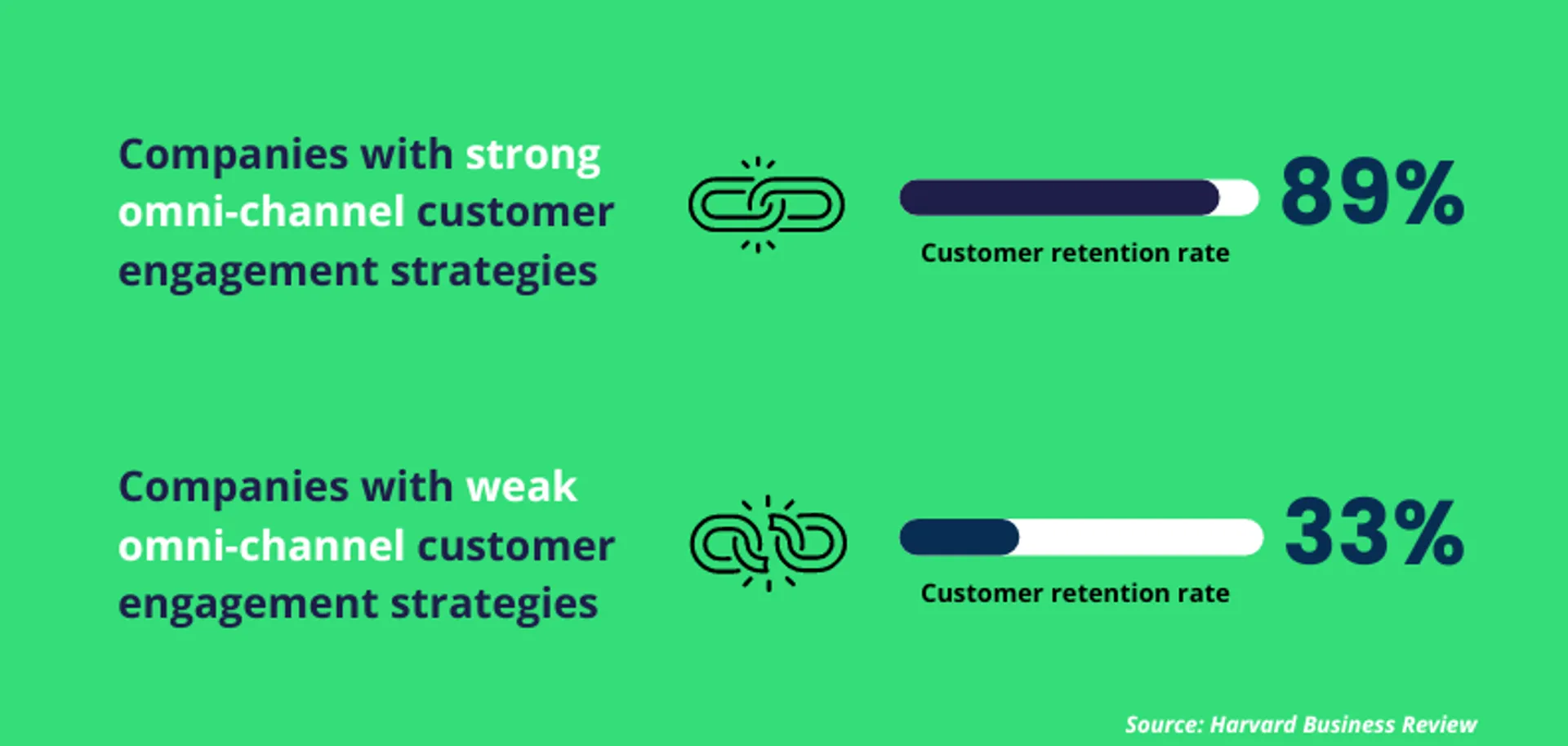As the e-commerce market continues gaining momentum, businesses constantly seek to enhance their logistics and supply chain processes. In turn, the technological advancements pushed logistical optimization even forward, making it easier than ever for companies to manage their logistics operations.
Below, we'll explore eight ways advancements in the e-commerce supply chain are boosting logistics and benefiting online retailers worldwide.
Table of contents:
I. Fundamentals of the e-commerce supply chain
II. Exploring the impact of e-commerce advancements on supply chain logistics
II. 1. Automation and robotics
II. 2. Sustainability
II. 3. Real-time tracking and tracing
II. 4. AI and data analytics
II. 5. Omni-channel integrations
II. 6. Plug&Play integrations
II. 7. Effective last-mile delivery
II. 8. Flexible warehouses & micro-fulfillment centers
III. Final thoughts
I. Fundamentals of the e-commerce supply chain
What is an e-commerce supply chain?
The complete network of activities and processes involved in the flow of goods and services from producers or suppliers to online retailers and ultimately to end consumers.
If we look more into it, here are the main stages:
- Product sourcing - manufacturing, wholesale, dropshipping, etc.;
- Online sales channel management - owning a website, a digital marketplace or both;
- Inventory management - tracking and controlling the flow of goods;
- Order fulfillment - warehousing, picking, packing and preparing for delivery;
- Transportation & Delivery - securing a safe and prompt shipping process;
Why is it crucial to align e-commerce and supply chain effectiveness?
In today's marketplace, consumers expect fast, reliable service at every step of the buying process—from product research to delivery. A well-managed supply chain can deliver on these expectations while also controlling costs and reducing lead times.
However, to make the most out of the e-commerce supply chain, we need to understand how the e-commerce landscape is evolving and how it impacts supply chain logistics.
In the following paragraphs, we'll go through the latest developments in online commerce and explain how each can benefit an online retailer looking to boost its logistical operations.
Exploring the impact of e-commerce advancements on supply chain logistics
As customer preferences continue to evolve and competition intensifies, it is crucial for online businesses to stay informed about the latest trends in the e-commerce supply chain.
We have carefully analyzed the emerging trends that will have a significant impact on e-commerce supply chain management, and here are the main directions:
1. Automation and robotics - streamlining efficiency
Automation and robotics are transforming the e-commerce supply chain by enhancing efficiency and speed. With the integration of automated systems in warehouses and fulfillment centers, order processing and fulfillment have become faster and more accurate.
As an example, Amazon has successfully implemented advanced robotic systems that autonomously navigate warehouse floors, effectively picking and packing items to fulfill orders. These technologies minimize errors and increase productivity, allowing businesses to process more orders in less time.

2. Sustainability: embracing an eco-conscious approach
More and more companies strive to reduce their environmental impact. One example is the adoption of eco-friendly packaging materials, such as biodegradable or recyclable materials, reducing the use of plastic and minimizing waste.
Furthermore, by optimizing delivery routes and using environmentally friendly transportation methods such as electric vehicles or hybrid trucks, businesses can significantly reduce their carbon footprint.
When examining the preferences of online shoppers regarding the green logistics trend, the studies show that 37% of shoppers consider retailers' ethical and sustainability policies when making purchasing decisions. Additionally, 72% of shoppers report an increase in their purchase of eco-friendly products compared to five years ago.
3. Real-time tracking and tracing: enhancing transparency
Real-time tracking and tracing technologies allow customers to monitor their orders from start to finish, granting visibility into the e-commerce supply chain. Features like tracking numbers and delivery notifications give both online merchants and customers real-time updates on the status of their packages.
What is even better is that businesses can leverage this increased transparency to gain valuable insights into their customers' behaviors. With the data generated by real-time tracking and tracing technologies, they can:
- create a more personalized e-commerce experience;
- take informed decisions about the types of products they should stock;
- identify which customers are most likely to purchase certain items;
- address potential delays or inefficiencies in their supply chain.
4. AI and data analytics: unleashing the power of insights
Artificial intelligence (AI) and data analytics are two groundbreaking technologies that have completely transformed the e-commerce supply chain. They provide businesses with more in-depth insights at a significantly faster rate and with greater detail than ever before.
According to a recent study conducted by McKinsey, successfully implementing AI-enabled supply-chain management has resulted in significant improvements for early adopters. These improvements include a 15 percent reduction in logistics costs, a 35 percent decrease in inventory levels, and a 65 percent increase in service levels.
However, it is important to note that while AI technology is crucial, companies must also take organizational steps to fully capture the value of AI and not solely rely on technology.
5. Omni-channel integrations: bridging the gap between online and offline
An omni-channel integration describes the seamless connection between online and offline channels in a company's ecommerce supply chain. For example, companies may offer customers the option to order products online and pick them up from a physical store—rather than waiting for delivery.
According to a study by Harvard Business Review, companies with strong omni-channel customer engagement strategies retain an average of 89% of their customers, compared to 33% for companies with weak omni-channel strategies.
Omni-channel practices also enable customers to conveniently return items through multiple channels, offering flexibility and convenience. This integration allows businesses to adapt to the preferences of customers who may choose different shopping channels at different times.

6. Plug & Play integrations: streamlining operations and strengthening partnerships
The instant integration of e-commerce platforms and supply chain systems has facilitated stronger relationships with all the e-commerce players involved.
By utilizing plug and play integrations, businesses can effortlessly connect with their partners' systems, fostering efficient collaboration, seamless data sharing, and streamlined processes. This improved connectivity leads to enhanced coordination, quicker response times, and overall improved supply chain performance.
As a result, by establishing stronger relationships with their network of partners, companies can achieve higher levels of operational efficiency, customer satisfaction, and business growth.
7. Effective last-mile delivery: optimizing costs and boosting customer loyalty
The future trend of the global delivery technology market goes toward an increase in the use of innovative systems. As a result, companies are investing more in research and development to develop new technologies that will improve the efficiency of deliveries and make them more accessible to customers. This has led to an increase in demand for artificial intelligence (AI) and machine learning (ML) capabilities within delivery systems as well as driverless cars.
However, the most recent advancements in this industry have seen the adoption of innovative delivery methods, including drones and autonomous vehicles, to address issues like traffic congestion and decrease delivery times.
The use of crowdsourced delivery or partnerships with local delivery services is also gaining popularity as a means to expand delivery coverage and reach customers in remote areas.
Moreover, in regard to shipping speed, a growing number of businesses are placing a high priority on offering extremely flexible delivery options to meet the expectations of customers. These options include next-day, same-day, or specific time slot deliveries.
8. Flexible warehousing and micro-fulfillment strategies: streamlining cross-border logistics
The growing trend of flexible warehousing is being embraced by an increasing number of online businesses. By incorporating technologies that enable businesses to scale their warehousing capabilities in response to fluctuations in demand, they can easily adapt their warehouse space, labor, and resources. This approach allows online retailers to optimize inventory management and improve the efficiency of order fulfillment.
Another exciting development in e-commerce involves the establishment of smaller fulfillment centers strategically located near urban centers or consumer hubs. By harnessing the power of automation and robotics technologies, these compact centers efficiently process orders at rapid speeds, ensuring quick and precise fulfillment. The close proximity of these centers to customers enables same-day or on-demand fulfillment, catering to the increasing demand for fast and convenient deliveries.
Based on statistical analysis, the micro fulfillment market is expected to soar to $88.3 billion by 2031, with a staggering compound annual growth rate (CAGR) of 44.8% from 2022 to 2031.
Image not available
Final thoughts
In an ever-changing e-commerce landscape, online businesses that embrace these advancements and consistently seek new opportunities for innovation will find themselves in a stronger position to tackle the challenges of the e-commerce supply chain. By harnessing the positive impact of all the logistics advancements discussed in this article and staying ahead of technological developments, companies can gain a competitive edge, enhance customer experiences, and drive long-term success
If you are ready to begin implementing any of the advancements mentioned in this article, you are right where you need to be.
At Frisbo, we offer a user-friendly solution that allows businesses to optimize their e-commerce order fulfillment process with ease. Our extensive network of 52+ European warehouses provides online retailers with the flexibility to store their products in convenient locations, making local and cross-border logistics management simpler.
Furthermore, our integrated solution provides a comprehensive range of fulfillment services, including warehousing, pick and pack services, and Next-Day shipping to over 30 countries. With our real-time logistics tracking, effortless inventory management, and seamless e-commerce platform integrations, we empower e-commerce professionals to focus on scaling their sales and enhancing customer satisfaction.
If you have any questions or need assistance with improving your e-commerce order fulfillment process, feel free to reach out to us by sending a message or requesting a quote.




